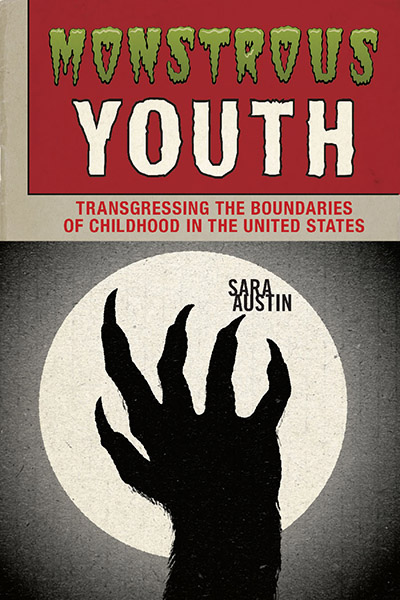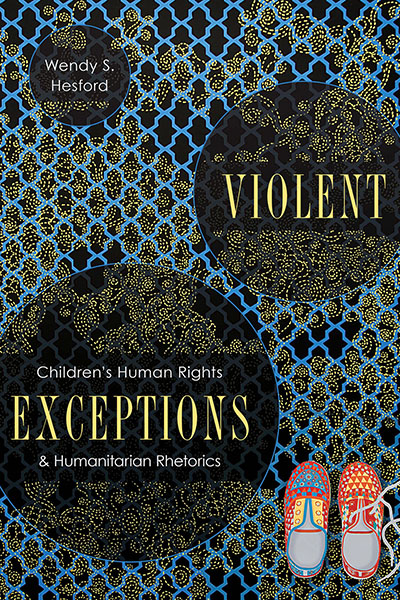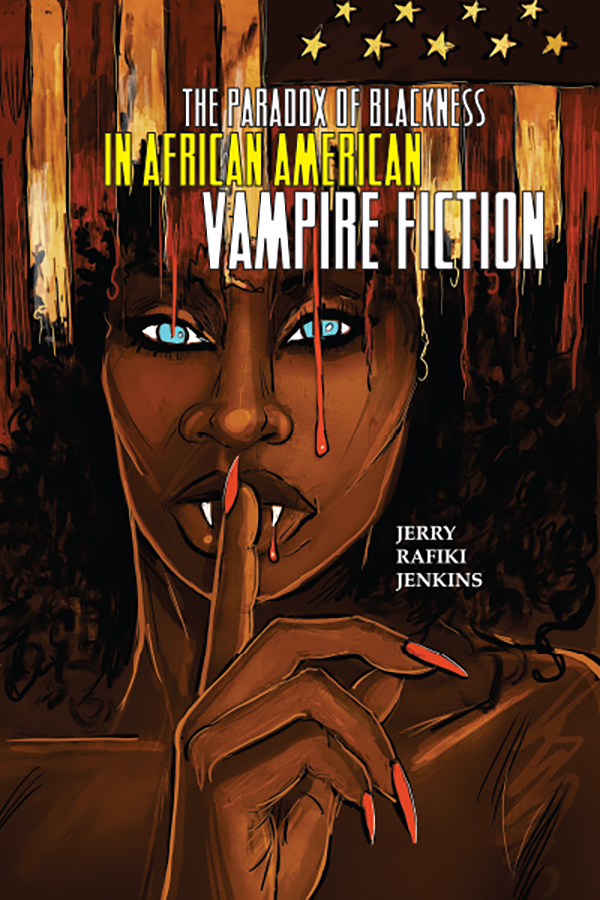Winner, 2024 Children’s Literature Association Book Award
Hear the author interviewed on the New Books Network podcast.
“Through keen and timely observations about monsters as cultural products directed towards children, Monstrous Youth expands the critical conversation about monstrosity in American culture and reveals a great deal about the shifting perceptions of youth, innocence, race, class, gender, and outsiders.” —Jessica R. McCort, author of Reading in the Dark: Horror in Children’s Literature and Culture
“Austin skillfully weaves together material from a range of disciplines—queer theory, children’s literature, film, print media—to illuminate a fresh perspective on the study of monsters and the monstrous. A pleasure to read, from start to finish.” —Michelle Ann Abate, author of No Kids Allowed: Children’s Literature for Adults
The monstrous has a long, complicated history within children’s popular media. In Monstrous Youth: Transgressing the Boundaries of Childhood in the United States, Sara Austin traces the evolution of monstrosity as it relates to youth culture from the 1950s to the present day to spotlight the symbiotic relationship between monstrosity and the bodies and identities of children and adolescents. Examining comics, films, picture books, novels, television, toys and other material culture—including Monsters, Inc. and works by Mercer Mayer, Maurice Sendak, R. L. Stine, and Stephanie Meyer—Austin tracks how the metaphor of monstrosity excludes, engulfs, and narrates difference within children’s culture.
Analyzing how cultural shifts have drastically changed our perceptions of both what it means to be a monster and what it means to be a child, Austin charts how the portrayal and consumption of monsters corresponds to changes in identity categories such as race, sexuality, gender, disability, and class. In demonstrating how monstrosity is leveraged in service of political and cultural movements, such as integration, abstinence-only education, and queer rights, Austin offers insight into how monster texts continue to reflect, interpret, and shape the social discourses of identity within children’s culture.
“Well-argued and richly detailed … Austin’s sweeping survey of post-war American monster culture offers a compelling and authoritative survey of the material history of the monstrous in children’s media. … Austin’s study has much to offer to anyone with an interest in American popular culture since the post-war era.” —Thomas Connolly, Journal of Pop Culture
“A multi-modal and multi-medial exploration that spends as much time in a history classroom as it does a literature one, Austin’s work nimbly moves about a myriad of topics and age ranges. … It is devastating in its willingness to discuss material culture that has been sorely overlooked otherwise. … In short order, Austin opens an entirely new and greatly needed discussion in children’s and young adult literature scholarship.” —Joseph Michael Sommers, Children’s Literature Association Quarterly
“Austin’s review of the roles played by monsters in American children’s and youth media from the 1950s to the present day is incredibly thorough, deeply nuanced, and engaging. I recommend this text not only for scholars of monster studies and/or childhood but also for those who are new beginners in these fields.” —Jennfier Duggan, MAI: Feminism & Visual Culture
“Austin’s work is a timely piece that deserves accolades for being a strong argument about how viewers, listeners, and readers should academically unpack monstrous works of horror . . . Austin, in the end, has written a thorough and precise book that can truly lay the foundation for other works that speak to children in American horror.” —Douglas C. Macleod, Historical Journal of Film, Radio and Television
“On the whole, this slim book is readable, informative, and makes a clear argument . . . I feel certain that I will incorporate some of the ideas here in my young adult literature course, and to me, that’s where the value of this book lies.” —Rhonda Brock-Servais, Children’s Literature

Sara Austin teaches in the Department of Global and Intercultural Studies at Miami University. Her articles have appeared in International Research in Children’s Literature, The Lion and the Unicorn, and Journal of Graphic Novels & Comics, among other journals.
Photo Credit: Jaden Austin
Contents
List of Illustrations
Acknowledgments
Introduction
Chapter 1 Enfreakment in 1950s Horror Comics and Teen Horrorpics
Chapter 2 Images of Racial Anxiety in 1960s and 1970s Picture Books
Chapter 3 Middle-Class Innocence, Monstrous Material Culture, and the Moral Panics of the 1980s
Chapter 4 Monstrous Families from 1990s Series Fiction to the Post-Twilight Era
Conclusion How to Make a Monster (Story)
References
Index





